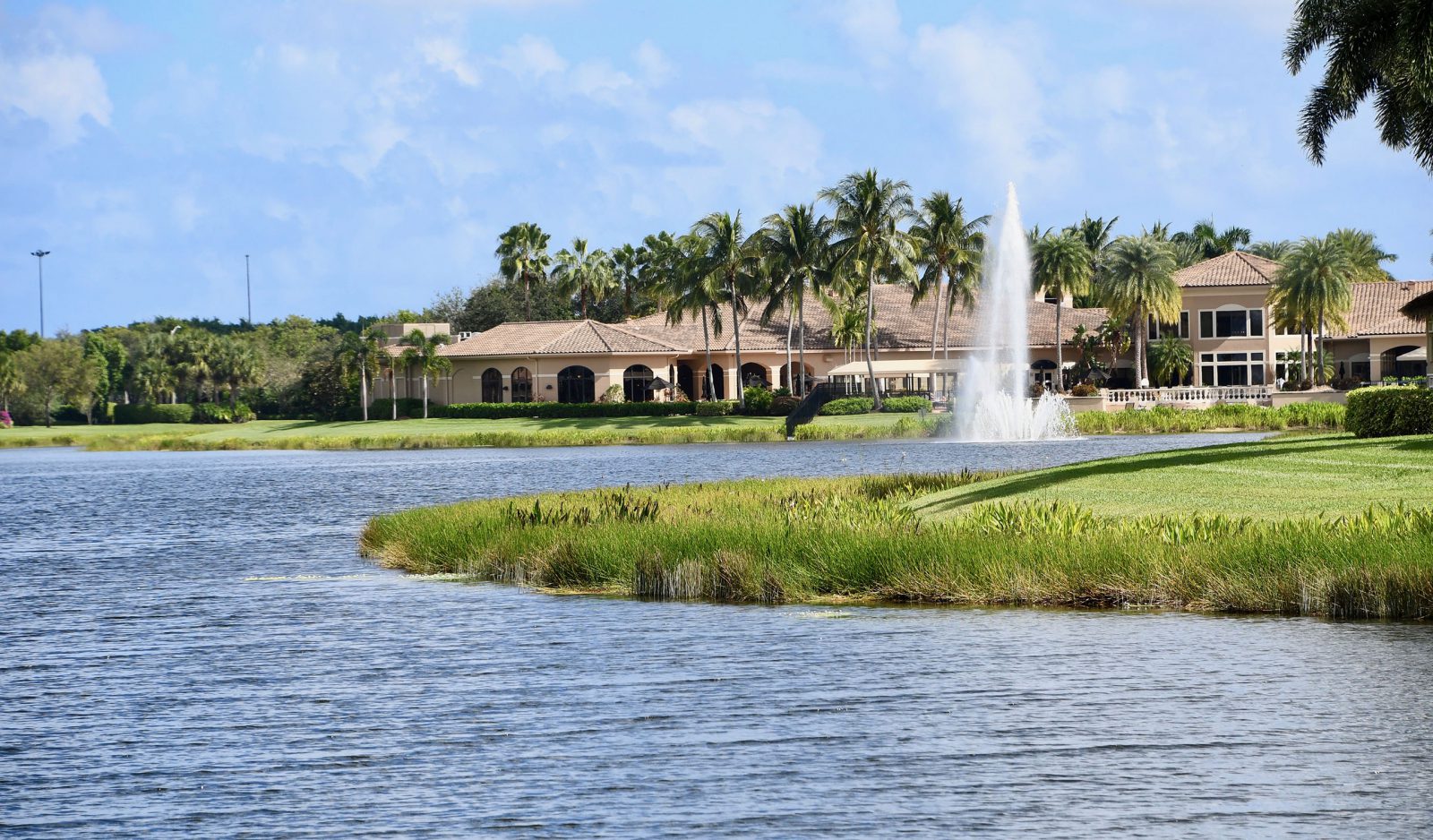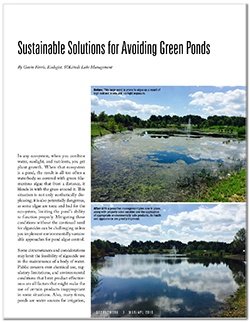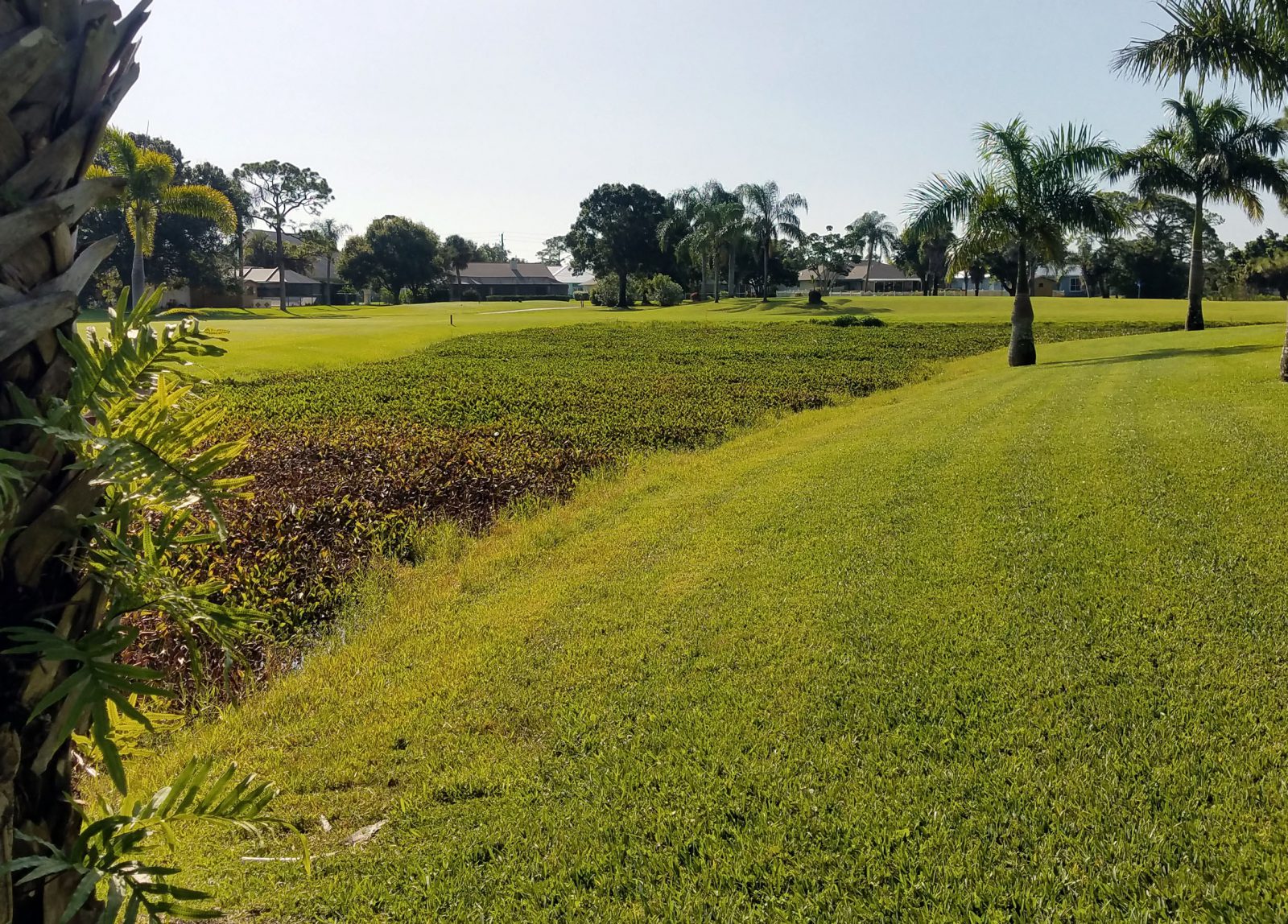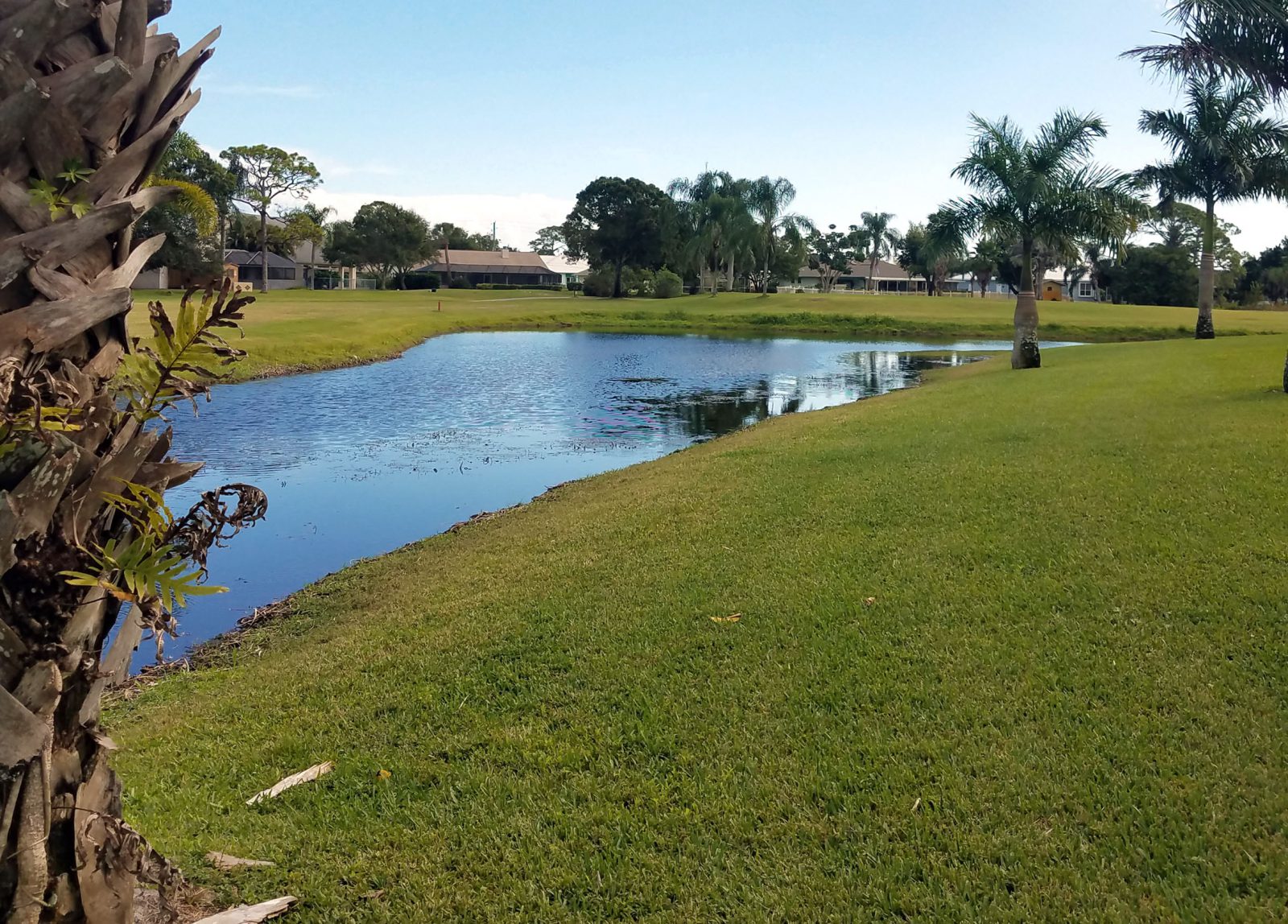
Pond Management: Sustainable Solutions for Avoiding Green Ponds
AS SEEN IN Groundwork Magazine: Written by Industry Expert, Gavin Ferris, Ecologist
 In any ecosystem, when you combine water, sunlight, and nutrients, you get plant growth. When that ecosystem is a pond, the result is all too often a waterbody so covered with green filamentous algae that from a distance, it blends in with the grass around it. This situation is not only aesthetically displeasing; it is also potentially dangerous, as some algae are toxic and bad for the ecosystem, limiting the pond’s ability to function properly. Mitigating these conditions without the continual need for algaecides can be challenging unless you implement environmentally sustainable approaches for pond maintenance and pond algae control.
In any ecosystem, when you combine water, sunlight, and nutrients, you get plant growth. When that ecosystem is a pond, the result is all too often a waterbody so covered with green filamentous algae that from a distance, it blends in with the grass around it. This situation is not only aesthetically displeasing; it is also potentially dangerous, as some algae are toxic and bad for the ecosystem, limiting the pond’s ability to function properly. Mitigating these conditions without the continual need for algaecides can be challenging unless you implement environmentally sustainable approaches for pond maintenance and pond algae control.
Some circumstances and considerations may limit the feasibility of algaecide use in the maintenance of a body of water. Public concern over chemical use, regulatory limitations, and environmental conditions that limit product effectiveness are all factors that might make the use of certain products inappropriate in some situations. Also, many times, ponds are water sources for irrigation, which puts an even greater limitation on the types of products that can be applied to those waterbodies. As a landscape contractor, this can be very frustrating, as ponds within managed landscapes are often prone to algae infestation.
The best way to deal with algae is to prevent it. Deploying a sustainable Integrated Pest Management (IPM) strategy that focuses on prevention and nutrient mitigation utilizing tools such as beneficial bacteria, aeration, vegetative buffers, and phosphorus binding minerals could also limit the amount of chemicals that is needed to prevent or control algae problems.
Every pond has bacteria present. Many “good” or beneficial bacteria are a natural part of aquatic life. These bacteria are responsible for breaking down organic matter such as grass clippings, leaves, sediment, and waste created by aquatic life, as well as metabolizing excess nutrients such as nitrogen and phosphorus. When these bacteria are in low supply, and the introduced nutrient load is high, an algae bloom can occur.
One way to help prevent an algae bloom is by aerating the water. Beneficial bacteria need oxygen to be productive, and aeration will actively introduce dissolved oxygen to your pond’s water column. Both submersed aeration systems and floating fountain aerators will increase the oxygen in your pond. Many times, the depth, shape, or aesthetic look desired will guide your decision as to which type of aeration is best for your pond.
Another factor that promotes algae growth is excess sunlight to a body of water. Controlling the amount of light that your pond receives is a common strategy in effective pond maintenance and can eliminate the ideal environment for algae to grow. The addition of a nontoxic and environmentally friendly blue or black dye to the water will reflect a tremendous amount of sunlight that would otherwise be available in the water column for photosynthesis and subsequent growth of algae. An important note to this strategy is that the dye must be applied regularly throughout the year, as it does degrade over time, and the goal is to maintain a constant UV screen. In addition to being an environmentally sustainable approach that helps prevent conditions that would be conducive for algae to grow, many pond owners like the aesthetic enhancement that a dye offers to a pond.
Managing the availability of nutrients for plant growth can be more challenging than influencing the water’s oxygen level or controlling the amount of light it receives, but ultimately, it may be the single most effective means of controlling algae. In most freshwater ecosystems like ponds, the nutrient of greatest concern is phosphorus. Nitrogen can cause problems from time to time, but by and large, if a pond is greener than it should be, there is probably too much phosphorus.
Seeing Is Believing
- Before & After


The first step in nutrient management is to assess the amount and type of fertilizer applied in the pond and its watershed. No fertilizer should ever be used if not shown to be necessary by a soil test, and even then, its application should be made carefully during the active growing season and with care to keep the product in the desired area.
Phosphorus is both transported into ponds as surface runoff, usually bound to some particle of sediment, and available in the nutrient-rich layer of muck at the bottom of the pond. Limiting the amount of sediment flowing into ponds is best accomplished by establishing a “buffer” area around the perimeter of a pond and within any sources of flowing water that feed into the pond. If the landscape permits it, leave the area around a pond unmowed, or landscape with beneficial plants and grasses. Both options will slow overland flow and let nutrient-laden runoff settle out before it reaches the aquatic environment. A great side benefit to establishing buffers is that they discourage geese, which can be a major nuisance both on shore, as they can damage lawns and ornamental plants, and in the aquatic ecosystem, as phosphorus is introduced from their waste.
If a buffer area on shore is not an option or is not preferred by the property owner, emergent vegetation can be established in the shallow water just off the bank. Sediment can then settle near the edge, where these beneficial plants can absorb the nutrients and prevent algae from gaining access to it. Some attractive native plants that are useful in this regard include three square rush and pickerelweed.
After addressing how to reduce introduced phosphorus load, the next source to manage is the naturally occurring phosphorus in your pond. The first and arguably most important step is to test the water and sediment chemistry. Knowing the nutrient levels and the ratios between different nutrients is critical to bringing nutrients into a healthy balance. Even for ponds that appear healthy, having water chemistry data on file is extremely useful. If a problem develops in the future, such as an unusual algae bloom for instance, tests taken at that time can be compared against this baseline data to determine if a chemistry change is responsible for the adverse event.
The nutrient-rich layer of organic muck on the bottom of ponds continuously releases available phosphorus into the water column. The most extreme and expensive measure for removing phosphorus from the bottom of a pond is to bring in equipment and dredge; however, this can usually be avoided or postponed through regular pond maintenance. As well, beneficial bacteria and enzymes can be added to process this organic matter naturally. Combining these biological measures with aeration can, over time, bring down the amount of organic muck in the bottom of a pond and make the environment less hospitable to algae growth.
Probably the most immediate and effective way to reduce phosphorus in a pond is to sequester it in the water column. A number of environmentally conscious products can bind with phosphorus to make it unavailable to fuel algae growth. The best choice of product for a particular pond, as well as its dosage and means of application, will depend on the conditions of the site and the results of a comprehensive water chemistry analysis. Re-treatment may be necessary from time to time depending on the rate at which phosphorus is deposited in the pond through future inputs like fertilizer runoff and sedimentation.
When trying to avoid “green ponds,” several year-round, environmentally sustainable strategies can be deployed; however, it is best to prevent algae before it grows. Every pond’s ecosystem is different, so it is rare for one single technique to be the “silver bullet” that prevents an algae problem.
Proper pond maintenance is an ongoing process that requires regular observation and adjustment. Extreme cases may still require occasional treatment with chemical products, but improving the overall health and balance of the ecosystem will dramatically reduce the frequency of required treatment and make those minimal treatments more effective. A doctor will tell you it is much easier to treat an otherwise healthy patient than one with chronic health problems. Likewise, doing as much as possible to improve the general health of a pond will yield a better looking pond and minimize the treatment of any future problem.
Gavin Ferris is an Ecologist with SOLitude Lake Management. As an entomologist and ecologist, Gavin has a keen understanding of the organisms and processes that allow a healthy ecosystem to function. By incorporating concepts of ecological sustainability and community ecology into his treatment and maintenance strategies, he is able to improve not only a pond’s appearance but also its health and resilience to pollution and invasive species.
SOLitude Lake Management is committed to providing full-service lake and pond management services that improve water quality, preserve natural resources, and reduce our environmental footprint. Lake, pond, and fisheries management services, consulting, and aquatic products are available nationwide. Learn more about SOLitude Lake Management and purchase products at www.solitudelakemanagement.com.









